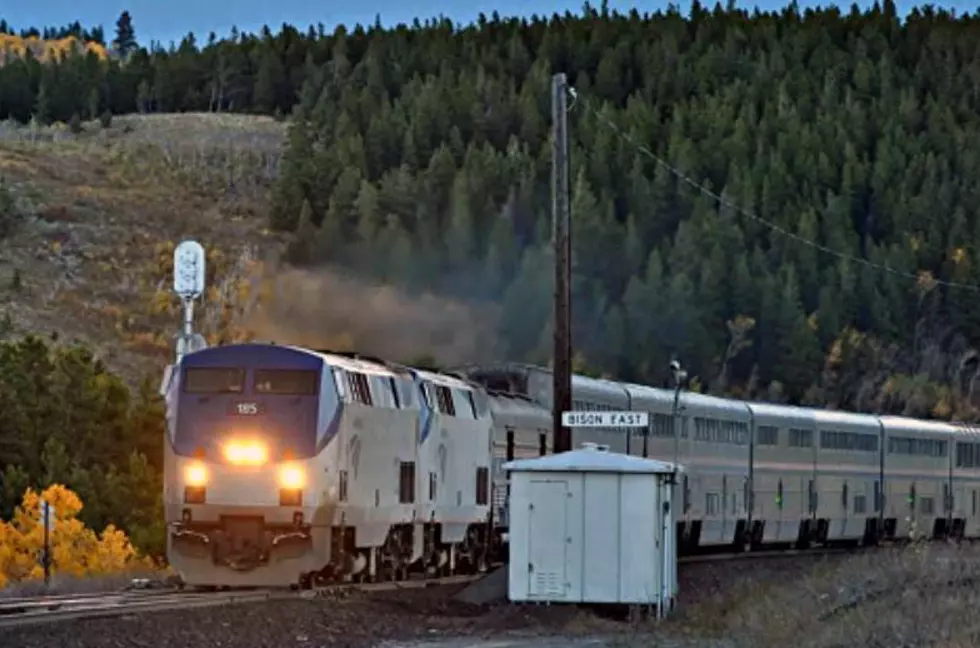
Study: Restoring North Coast Hiawatha would generate $270M across 7 states
The Big Sky Passenger Rail Authority on Wednesday unveiled a preliminary report stating that restoration of the southern Amtrak route across Montana and six other states would generate more than $270 million in economic benefits.
At the same time, bringing back the North Coast Hiawatha would cost Amtrak around $68 million a year to operate. The route could expect more than 420,000 annual passengers and more as the nation enters a new age of continental travel.
"We think that it would generate about $271 million every year in economic benefit to the seven states served, and we think it would cost Amtrak, very roughly, $68 million a year to operate,” said Jim Mathews with the Rail Passengers Research Team. “That cost would be partly offset by $41 million or so per year on fares and other customer revenue."
According to the report's findings, restoring the route would bring service to roughly 47 stops across seven states ranging from Washington to Illinois. The benefits to the counties served by the stops would aggregate to around $70 million annually and generate nearly $5 million in visitor spending.
Broken down, Montana would net around $550,000 in new spending – a blend of lodging, restaurants, shopping and entertainment. For some communities, that revenue would be significant.
“It's important to note that this is not all the spending captured in our modeling work, but simply the value of new spending,” the report suggests. “There are more effects from a broader view of visitor spending captured elsewhere in the model.”
The study also suggests that Montana would gain around $415,000 in new tax revenue. That's a portion of the route's seven-state total of $3.5 million.
Over the past five years, Rail Passengers also has assessed and compared ridership at every station in the Amtrak system to reveal the differences in how rural counties use long-distance routes versus more urban counties.
According to the report, restoring the North Coast Hiawatha would have impacts similar to the Sunset Limited and Texas Eagle. Based upon the mix of urban, suburban and rural counties, the route would generate around 426,000 annual riders.
“Our modeling suggests that of the total ridership, roughly 11% would represent travelers who would stay home and not spend any money in the absence of the service,” the report found. “That 11% induced ridership, or roughly 29,000, can be expected to generate an additional increment of $4.8 million of new visitor spending every year.”
Also on Wednesday, the Big Sky Passenger Rail Authority welcomed four new Montana counties into the fold including Mineral, Stillwater, Rosebud and Custer. That brings to 18 the number of counties along the southern route that have joined the association.
While their politics may often differ, they're aligned in the push to restore service and transportation opportunities. Members of Montana's congressional delegation are backing the effort as a result.
“This project will bring Montanans together in an effort to improve transportation, create jobs, and increase business and tourism throughout the southern half of the Treasure State,” Sen. Steve Daines wrote of the effort. “We must continue to strengthen our state's infrastructure to help improve travel within Montana, and support tourism, which is a major key in sustaining economic growth.”
Sen. Jon Tester also has pledged support.
“Cost efficient, safe rail is absolutely essential to a state as big as Montana,” Tester said. “That's why I worked to include strong investments in rail that I helped negotiate with my colleagues across the aisle and the White House.”
Those investments include $15 million to investigate the restoration of long-distance routes that have been discontinued, including the North Coast Hiawatha and Pioneer routes. The legislation marks the largest federal investment in transportation in the nation's history.
And that has the eye of the passenger rail industry.
“This is a rare opportunity to make the case that intercity passenger rail deserves substantially greater funding and resources, and must grow to serve more people and more communities,” wrote William Flynn, the CEO of Amtrak, who was invited to join the Big Sky Passenger Rail Authority as an ex officio member. “The effort to restore, and advance, passenger rail to underserved regions of the country is vitally important.”
